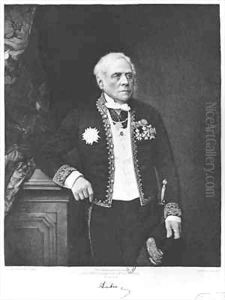Leon Cremiere Paintings
Leon Cremiere was a French artist born in 1822, during a period that saw the rise of Romanticism, which would later influence his work. Cremiere, though not as widely known as some of his contemporaries, made significant contributions to the art world through his detailed and evocative paintings. He received his artistic training in Paris, which was the epicenter of the European art scene at the time. There, he was exposed to the works of the old masters as well as contemporary trends, blending these influences into his unique style.
Cremiere's oeuvre is characterized by its focus on historical and mythological themes, showcasing his interest in the past and its narratives. His paintings often featured dramatic scenes filled with emotion and meticulously rendered detail, demonstrating his mastery over technique and composition. Despite his skill and the quality of his work, Cremiere struggled to achieve the same level of fame as some of his peers. This was partly due to the competitive nature of the art world in 19th-century France and the shifting tastes of the public and critics, who were beginning to embrace Impressionism and other emerging movements.
Throughout his career, Leon Cremiere exhibited his work at various salons and exhibitions, receiving accolades and recognition from his peers. However, his preference for classical subjects over the more modern themes that were becoming popular at the time may have limited his audience and impact. Cremiere's dedication to his art remained unwavering, and he continued to paint and refine his craft until his death in 1878. Today, his works are appreciated for their beauty and historical interest, offering insight into the artistic trends and cultural contexts of his time. Cremiere left behind a legacy that, while modest in comparison to some of his contemporaries, continues to be celebrated by art historians and enthusiasts who recognize his contribution to 19th-century French art.

